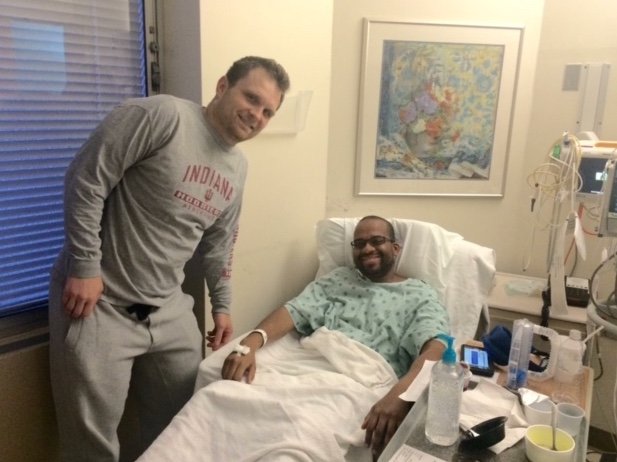Former CEO Shares 3 Essential Elements of Leadership From Building Billion Dollar Company
When Dave Browne joined LensCrafters in 1986, it was a startup, just 3 years old and owned less than 50 stores. In 1989, Browne became the CEO and in less than a decade the company:
- Had over 1,000 stores.
- Generated over $1 Billion in revenue.
- Saw its employee turnover decrease by 75%.
- Gave over 1 Million people the ability to “See For Free” around the world.
In a feat that was and is still, nearly unfathomable, LensCrafters saw a double-digit % increase in both profits and sales during 38 of 40 quarters under Browne’s leadership.
The wild success that LensCrafters experienced can be attributed to the powerful framework Browne calls the 3 Essential Elements of Leadership that he wraps in a simple acronym:
Servant Leadership with H.E.A.R.T.
H – Higher Calling – The Business and Yours
E – Engage, Equip, Enable, Energize
A – Attention To Detail (Especially Time)
R – Research – Measure Everything
T – Total Reward System – $, Tangible, Mental, Emotional, Spiritual
Whether you’re a CEO, a tech entrepreneur or a middle manager at a corporate company, this framework will be valuable to you.
Browne recently had brunch with a small group of EDGE mentees and mentors and shared incredible success stories from LensCrafters’ unprecedented growth.
Once during the company’s annual gathering, he rented an armored truck to deliver $40,000 in one-dollar bills to one of his top performing managers on stage. Another time, he was face to face with a woman weeping uncontrollably in front of him because she had never been able to see further than a few inches before getting a free pair of LensCrafter glasses.
Vulnerably, he also shared areas where he had failed and fallen short as a leader, especially early on in his role as CEO.
When I realized my intense focus on results was overbearing and I had failed in making people feel fulfilled and valued, I had to apologize.
Like most 29 year olds leading a fast-growing, multi-million dollar business, mistakes were bound to be made. He was often managing people twice his age and making decisions beyond his experience. His leadership skills developed over time but being classically trained in the era of “Neutron” Jack Welch and “Chainsaw” Al Dunlop, he knew how to do one thing from day 1 – get results.
Browne graduated from the Wharton Undergraduate School of Business and became one of the youngest Brand Managers in the history of Procter & Gamble before joining LensCrafters. Maniacally focused on delivering results, Browne would do whatever it took to get the job done, whatever it took to win. Everything was a distant second to delivering results, including people.
I was fortunate to become the CEO at just 29 years old and thought I was “hot stuff” but the truth is, after a couple of years I was miserable. We were successful but were nowhere near as fulfilled as we could’ve been.
As a West Philly kid, Browne grew up tough and learned the value of hard work from his father, who taught himself how to fix engines. When speaking of him, Browne lit up.
My dad was incredible. Completely self-taught, he could fix any motor of any kind without a manual!
Browne’s family raised him in the church, where he learned the value of loving others and appreciating people. But after a short period leading LensCrafters, Browne began to realize that he was leading a double life at home and at work.
I was a classic numbers only butthead who could do everybody’s job and was proud of telling them that.
One night while Browne was on a walk during a men’s church retreat to wake up from the terrible speakers, God gave him a powerful revelation that would alter the future success of LensCrafters, his views of leadership and affect millions of lives across the world.
“God, I’m not blending my personal life and my business life and I’m miserable help me”, he prayed. In a moment of absolute clarity, Browne felt like God told him, “You moron. Why do you think the two have to be separate?”.
This realization hit him hard and eventually lead him to the first essential element of leadership.
1) You must have absolute clarity about WHAT “you” and the “business” want to be and want to accomplish.
-
Clarity For Yourself. Clarity for yourself allows your gifting, purpose and passions to come to life and will usually lead to more fulfillment and success.
-
Clarity For Your Business. Clarity for your business unleashes the full energy and talents of your people against a common goal, in a consistent and compelling way.
You won’t reach your full potential personally or in business if you don’t have a crystal clear vision for both. When those two components are aligned, the results can be truly magical.
Companies that experience high-growth phases usually come out with broken cultures and a loss of identity. LensCrafters was able to maintain unprecedented growth because they aligned personal outcomes with business objectives, to create powerful momentum towards their goals. With this system, team and individual goals rolled into one unified mission.
Browne emphasizes 4 key parts when it comes to creating clarity personally and in business.
-
A Compelling, Energizing Vision. A compelling vision pushes and inspires. The goal is to constantly re-inforce the vision, both personally and corporately so that everyone leads from an authenticity that can’t be replicated.
-
A Powerful Mission.
How will you make a difference in the lives of your customers, your stakeholders and your employees? Selling your company’s vision and long-term goals should be part of the constant conversation but why you exist should always be at the core. -
Clear Values.
What are the core principles you and your business live and operates by? Your value system becomes the playbook for how you behave.
The LensCrafters executive team created their 9 core values in 1986, to which Browne added the 10th in 1990 after he decided to change his leadership style.
- Nurturing Individuals
- Building On People’s Strengths
- Accepting and Learning From Mistakes
- Focus on Winning, Not Individual Scoring
- Pushing Breakthrough Ideas
- Thinking and Acting Like a Long-Term Owner
- Demanding the Highest Possible Quality
- Constantly, Measurably Improving
- Acting with Uncompromising Integrity
- Having Fun
-
Insightful Strategic Plan.
What are the action steps that you will take to achieve progress toward the Vision and Mission in a way that brings the Values to life?
The first 3 components rarely change once you have them right. Your strategic plan should be constantly evolving based on where you are, as well as the competitive and economic environment you exist in. Your strategic plan should be done at least annually and adjusted along the way.
As an entrepreneur you are never fully certain how things will play out. No one can really give you a description for how emotional your journey as a leader will be.
On the occasion of LensCrafter’s 10th anniversary, Browne said this:
Looking to the future, I’m sure of only one thing – the inevitability of constant change and our readiness to face it. It will be harder to stay on top than it was to get there. We will have to recreate ourselves continuously in order to maintain our leadership position in an ever-changing category.
That same night after Browne felt that God had spoken to him, he was drawn to a particular Bible passage in Matthew 20, when Jesus spoke of servant leadership to his disciples:
“Instead, whoever wants to become great among you must be your servant, and whoever wants to be first must be your slave— just as the Son of Man did not come to be served, but to serve, and to give his life as a ransom for many.”
At that moment Dave saw Christ’s example, and his message to his disciples that challenged him to serve others first. It hit him hard. “That’s not how CEO’s do it”, he said. “They rule the roost”.
Any CEO can come in and cut costs, lay people off and hammer their competition but becoming a servant leader truly requires a change in mindset. Which lead him to his second essential element of leadership.
2) Absolute clarity on How “you” will lead and how you want “others” to lead.
Alignment and consistency of “How” you lead creates a powerful environment in which people know what to expect and are unleashed to do their very best.
When Browne arrived back at work, he immediately called his leadership team together and admitted that he was wrong. He felt as thought he hadn’t been the leader the God had called him to be.
I called everyone in the entire company to simply tell them I’m sorry and to share how I would reshape the business by implementing a servant leadership model.
People were skeptical at first but the process for rebuilding trust became apparent after answering these two questions: 1) What do they need to hear? and 2) What do they need to see? From there, Browne was able to create a plan to begin rebuilding trust. Which called for a restructuring in reporting and visits to stores personally.
Change didn’t happen overnight but after about 6 months you could tell the Inverted Pyramid leadership model began to have an effect.
Browne believes the model needs a few necessary components in order for it to be successful:
-
Understanding.
You must fully understand the needs of the customer to effectively put their needs above your own. -
Unique Delivery.
You must be driven to deliver to them what they want in unique ways that add value. -
A Long-Term Mentality.
You must constantly try to understand, meet or exceed the needs of those you serve. You can never fully satisfy any of those three areas perfectly. Sometimes you will make choices that will benefit one group over another. Having a long term mentality will allow you to stay the course and measure success over time by balancing those choices accordingly. -
An Ownership Mindset .
Everyone in the organization must act like owners and adopt this mentality. When groups lose focus of the people and reasons they are serving, the model breaks down quickly.
This model creates a powerful and dynamic framework to lead but what are some practical ways to inspire this shift in mindset throughout an organization? Browne has a practical model that he has implemented numerous times.
3) Leadership has to consciously engage, equip, and energize those you lead at 3 levels – the Head, Hands & Heart.
10x leadership comes from environments where people are engaged, equipped and energized.
-
Engage.
Help them understand WHY what they do is important and how it contributes to their and the organization’s success. -
Equip.
Provide the training, tools and best practices to help them successfully do WHAT they need to do to contribute to the overall success of the organization. -
Energize. Unleash the emotional, if not spiritual energy that all have but rarely harness in the workplace. Make work atleast neutral to their family life – ideally a positive. Create an environment in which they feel loved and appreciated. Work hard but also have fun. Find and chase a HIGHER CALLING to the work.
Change must be inspired at three levels in order to experience the full effects of it.
-
Head.
Intellectual engagement is critical. Assume people are smart and valuable. Take the time to explain the WHY in addition to the WHAT. You unleash their intellect to perform their jobs better and they feel better about how they contribute.
What people want to know from their leaders:
– Where they are taking them (VISION).
– Why they exist (MISSION).
– How they are to operate (VALUES).
– What the plan is (STRATEGY).
The best leaders listen to feedback, encourage innovation and reward those who deliver. The LensCrafters incentive system was very clear and understandable. Employees could double their salary with bonuses they could measure themselves throughout the course of the year.
-
Hands.
Clarity on what to do and how to do it well is critical. Nothing is more frustrating for those you lead, than for you to waste their time and energy doing the wrong thing or doing the right thing poorly. Leaders need to ensure there is clarity on critical tasks, training on best practices and coaching for how they’d like to see things done. -
Heart.
This is often the most overlooked component of leadership in the business world but is the most important in Browne’s opinion.
To Browne, there are two elements to unleash within the hearts of employees in your organization – the emotional and the spiritual.
-
Emotional.
Emotion channeled the right way creates energy and passion that can lead to a whole different level of success. Leaders need to create the environment where it is good to care and to open up the heart. You must get rid of negativity quickly and at all costs. You must over communicate publically the successes of your people while always privately communicating the corrections and coaching. -
Spiritually.
Browne believes we have all been created to fulfill a Purpose or Higher Calling in Life. There is a vacuum in us that can only be filled when you are living out the Higher Calling that God has created for us.
Finding and unleashing that your Higher Calling leads to another level of energy and passion that can create an even higher level of fulfillment and success. When it links to the actual vision, mission, values of the business you’re leading in and you are leading with the mindset of a servant leader, the results can be truly magical.
At the end of Matthew 20, just after the challenge of Servant Leadership, Browne was once again convinced God’s velvet 2×4 was whacking him upside the head. Christ healed the blind with the Gift of Sight. He shared he simply broke down and cried. It had been all about making money by doing eye exams and selling eyewear. It was now much clearer that he was challenged to a higher calling – to Bring the Gift of Sight.
LensCrafters went from simply selling eyeglasses and doing eye exams to Bringing the Gift of Sight to those who they served and sold to. To unleash the Heart they “tithed”, bringing the Gift of Sight to those who had the least but needed it the most, doing one “gift ” for every ten pairs of glasses they sold.
Associates at the store level would select people from their networks and communities and give a free pair of glasses to those who have the least but need it the most.
This Higher Calling lead to over 1 million people getting the gift of sight and was the foundation for the record growth and profitability of the company.
All three constituents were served well – the customer, the stakeholders and the employees. A true win-win-win for everyone.
Leaving a legacy…
If you follow thee 3 essential elements of leadership you will become a more effective leader in your organization but personally as well.
Dave Browne is an incredible example of someone who prioritizes others above himself and has had an incredible impact on thousands of people across the world.
Although he’s achieved success corporately, Browne holds these successes lightly. In an interview after becoming a co-CEO of Luxottica, he had this to say,
“My master plan is to do the right thing each morning and recognize God’s in control and hang on for the ride,” he said. “I’m trying the best I can to do the right thing every day. That mind-set lets you sleep pretty well at night; it lets you love freely.
“And that’s a pretty good way to live.”
What are you focused on? What’s your higher calling? Are you chasing after your purpose?







![[Audio] 3 African American Leaders Share Their Perspective On Race, Grace & Brokenness In America](https://edgementoring.org/wp-content/uploads/2016/07/EDGEWebinarRecording-768x190.png)



